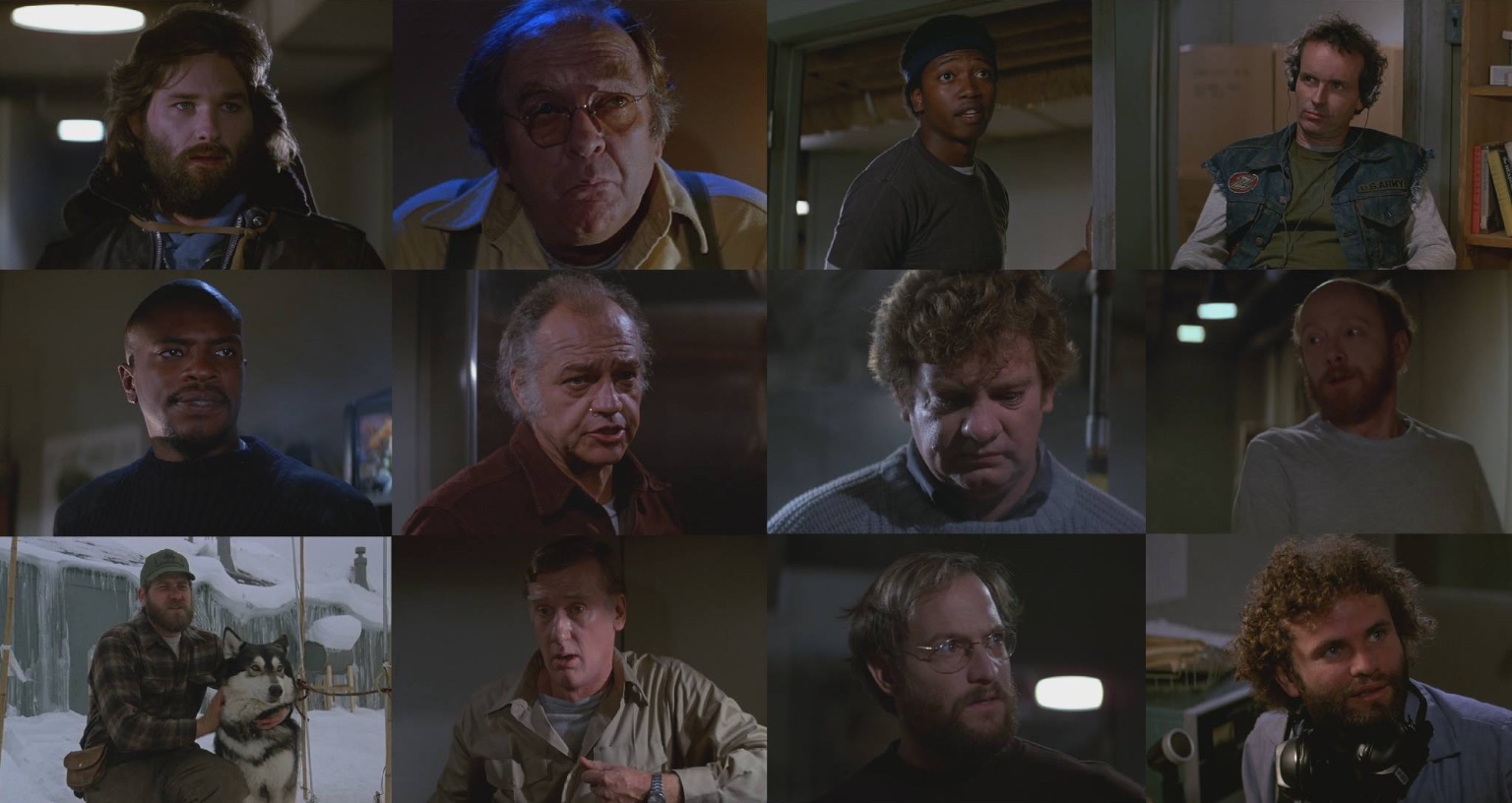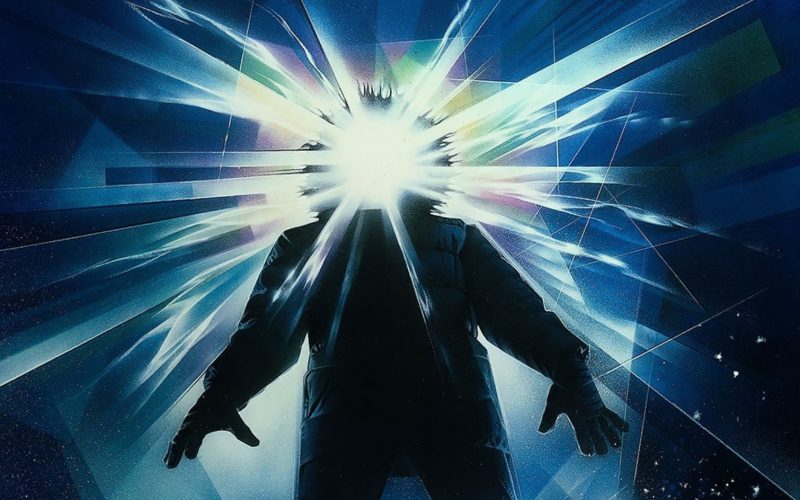John Carpenter’s The Thing (1982).
“I know I’m human. And if you were all these things, then you’d just attack me right now, so some of you are still human. This thing doesn’t want to show itself, it wants to hide inside an imitation. It’ll fight if it has to, but it’s vulnerable out in the open. If it takes us over then it has no more enemies, nobody left to kill it. And then it’s won.”
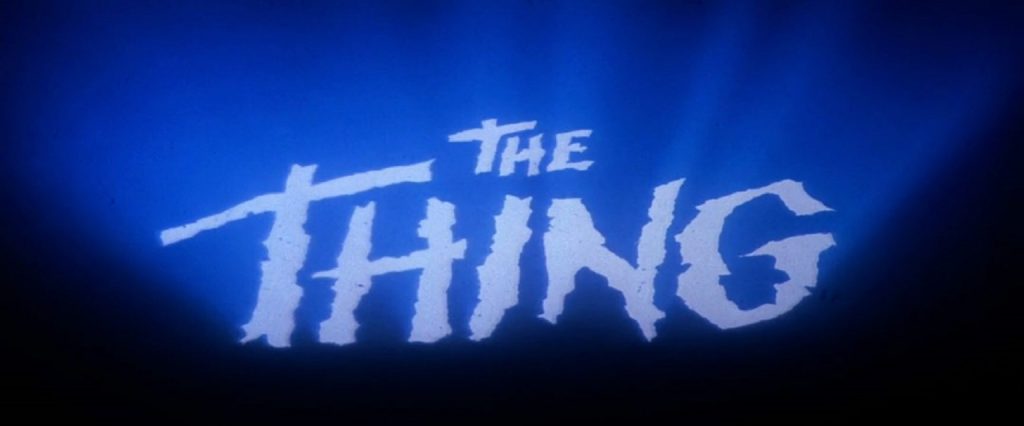
2017 marks the 35th anniversary of John Carpenter’s science-fiction/horror masterpiece, The Thing. Based on the novella Who Goes There? by John W. Campbell Jnr. first printed in 1938 and later adapted to the big screen in 1951 by Howard Hawks and Christian Nyby in the form of The Thing From Another World, Carpenter’s version is less of a remake of the 1951 film and more of a second stab at adapting Campbell’s novella. If you’re new to Carpenter’s film and The Thing lore in general, then by way of clearly outlining all versions of The Thing, it’s important to also mention the 2011 film directed by Matthijs van Heijningen which I’ll come to later.
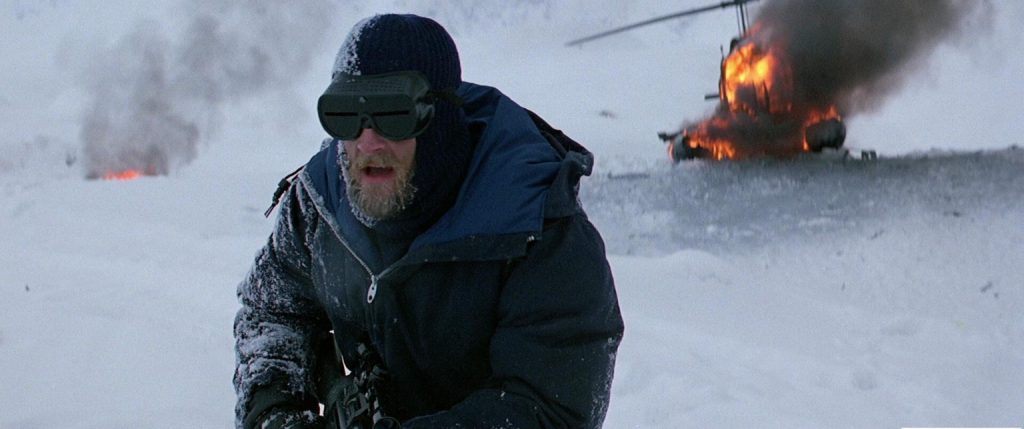
The story of the making of Carpenter’s iteration and its subsequent release is fascinating for a number of reasons. It wasn’t one of those troubled or doomed productions. Yes there were on-set mishaps, mainly relating to the complex and cutting edge practical effects, but nothing that would mark it out as a film borne out of adversity. If anything The Thing’s production is an example of a coming together of immense creative and acting talent, the results of which have created a film whose acclaim has clawed its way from near abject critical and commercial rejection, to seeing it eventually soar to the heights of retrospective accolade and acclaim reserved for a select few films.
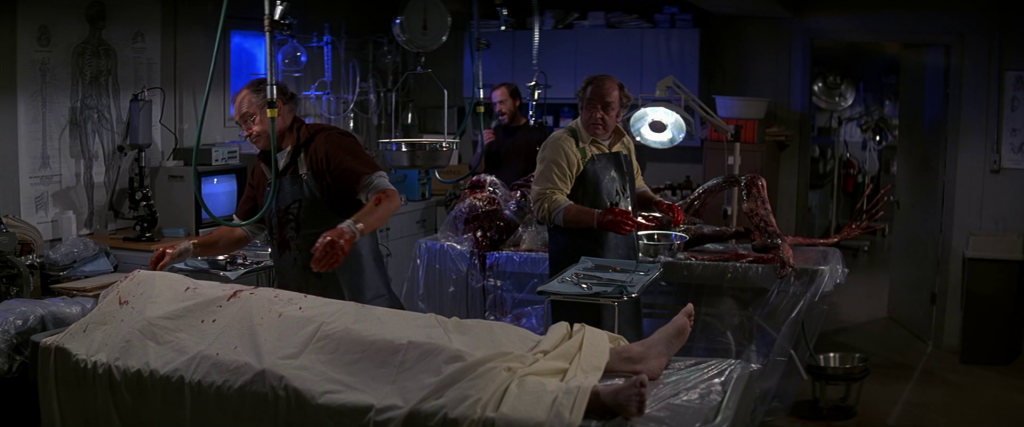
Carpenter’s version involves a team of 12 men staffing a scientific research installation in Antarctica who are given cause to investigate a similar Norwegian outpost where the occupants have seemingly gone mad. What transpires is that they’ve uncovered a huge vessel of extraterrestrial origin that’s been buried beneath the ice for a hundred thousand years. Their discovery extends to something else that was found near the crash site, an alien being so deadly that it poses a risk to the entire planet of extinction level proportions.
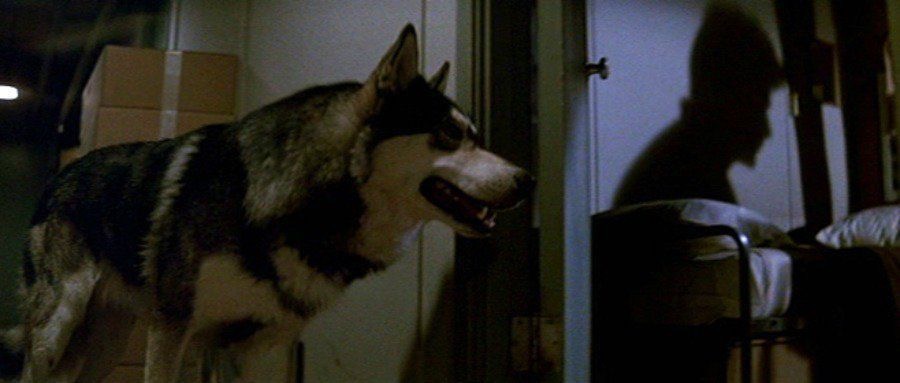
One of many things the film gets right, perfects even, is the nature of the alien creature’s biology. This wonderfully conceived organism is truly unlike any other seen in a film before. It isn’t an individual but rather a shape-shifting nightmare that absorbs, assimilates and eventually, perfectly mimics any living thing it comes into intimate contact with. It is first introduced to our protagonists in the form of a dog that the two human survivors of the Norwegian outpost were trying to kill as they chased it to the American Outpost 31. Both Norwegians died before being able to warn the Americans but tellingly, if you’re fluent in Norwegian, then the unsubtitled dialogue at the beginning will give the game away. As the Americans try to get their heads around the odd behaviour of the now dead Norwegians, their new canine companion slowly familiarises himself with his new surroundings. The acting from Jed, a Malamute-Wolf mix, is some of the best ‘acting’ from an animal you’ll likely see in a film. We, the viewer know that there’s something just not right about this animal. The Americans would naturally assume madness had taken the Norwegians but they’d only been at base for a few months, not long enough for cabin fever to set in.
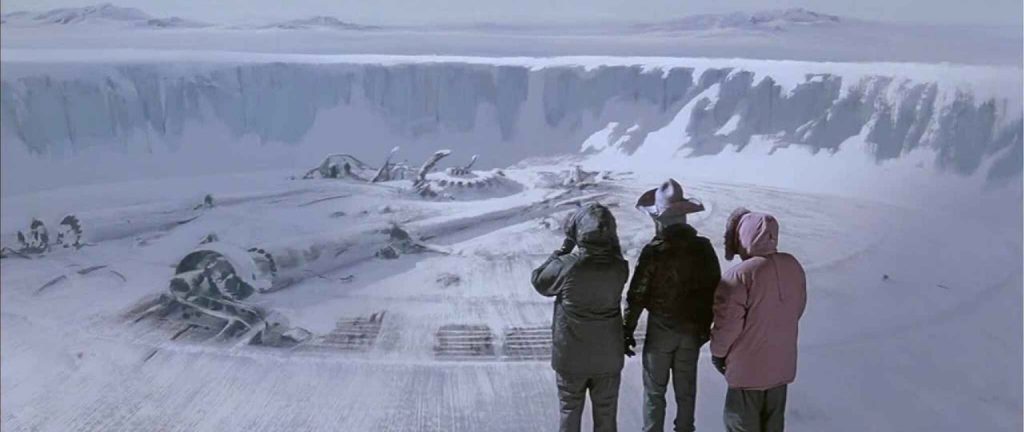
Fortunately the mystery isn’t dragged out as helicopter pilot R.J. Macready, played by Carpenter regular Kurt Russell, and Dr. Copper, played by Richard Dysart, fly to the now smouldering Norwegian camp. There they find the charred remains of something that can scarcely be described. In one of two autopsy scenes back at Outpost 31 we see the remains up close as Wilford Brimley’s Blair examines it and tries to work out just what the hell it is. A twisted, deformed mishmash of man and god knows what else, yet most disturbingly, it has a normal set of human internal organs.

Armed with the knowledge of this grisly discovery, we are no more prepared for the horrors to follow as the dog, now placed in the outpost’s kennels with other dogs, makes its true form known. It’s the dog scene where the incredible work of practical effects wizard Rob Bottin hits us full force. We are spared nothing as the dog mutates into something almost indescribably horrifying (whilst still remaining beautifully conceived). The sheer ingenuity of this biological terror is staggering. In this age of computer generated imagery, it’s refreshing, comforting even to see the tangible benefits of such wonderful real-world practical artistry from one of the industry’s true mavericks. Bottin, assisted in this early scene by fellow effects master Stan Winston who was brought on board to alleviate the heavy workload, shows us things we literally have never seen before and this is perfectly augmented by the stunned reaction of our protagonists. Keith David’s character, Childs, who arrives with one of the outpost’s stock of two flamethrowers is aghast and stunned in his tracks as the creature grows, transmogrifies and then tears itself open revealing an almost flower-like appendage made seemingly of dogs tongues and teeth. The image is so jaw-droppingly terrifying that Childs’ only possible reaction is to snap out of it and torch this thing into oblivion. It’s a grandstanding scene of absolute precision craftsmanship. The creature design, the physical performances from the actors, the sound design with the terrifyingly inhuman roars of the monster, the sharp editing, each cut perfectly timed, the subtle score by Ennio Morricone, there only to augment the terror not dominate the scene, this is filmmaking at its absolute best.
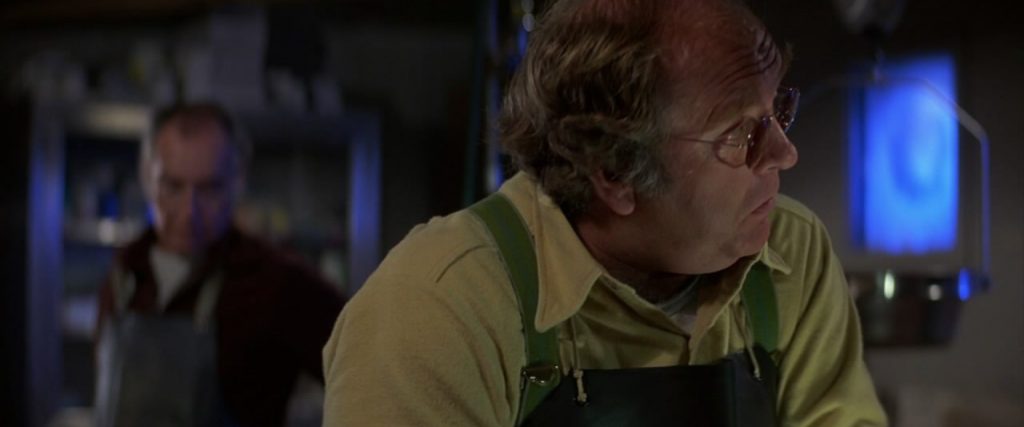
After this we are privy to another gruesome autopsy scene performed by Blair but this isn’t merely repetitive filler or lazy exposition. This is in fact essential exposition as in order to convey the full threat this organism poses, not just to Outpost 31 but to the world, we must truly understand what it is. An organism of which a small amount of it’s own cells is just as dangerous as the fully formed creature. As Blair later works out, just a small portion of this creature can quickly and silently assimilate and overtake its host and from there multiply its mass not just as one creature but a potentially infinite amount of shape-shifting monsters limited only by how many other life forms it can find. In one of the film’s quietest but no less disturbing scenes, Blair uses a computer simulation to figure how long it would take the Thing to assimilate all life on Earth if it made its way back to a populated area – 27,000 hours. The film doesn’t make the maths easy for us but that’s total global assimilation in just over three years.
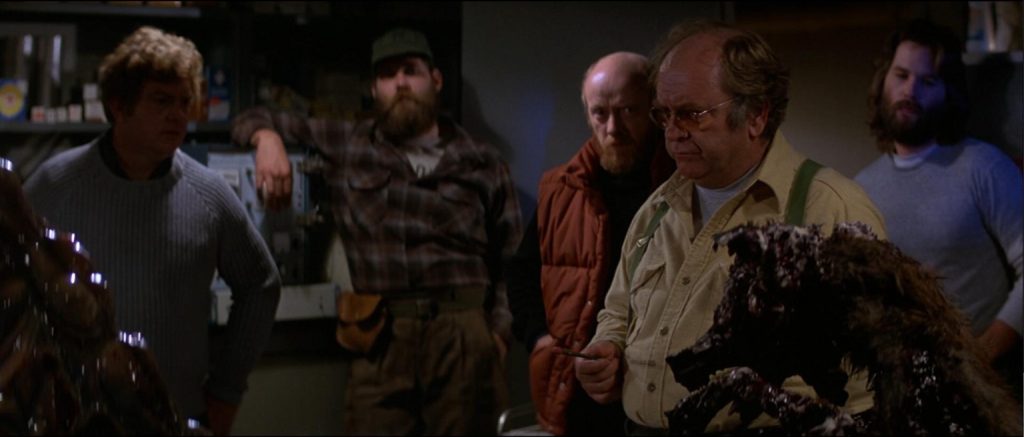
Once it’s clear that given the amount of time the dog was loose in the base unsupervised, then any one or more of the men could be infected. It’s this notion, in perfect tandem with the visual body horrors we’ve seen, that intensifies the feelings of anxiety, mistrust and dread made all the more smothering by the deadly cold of the environment outside. This sense of the unstoppable, the lingering threat of this unspeakable horror mixed with the rapidly growing feeling of all-consuming paranoia, marks The Thing out as one of the most perfectly effective horror films ever made. The concept, the set-up and the eventual on-screen execution are flawless.
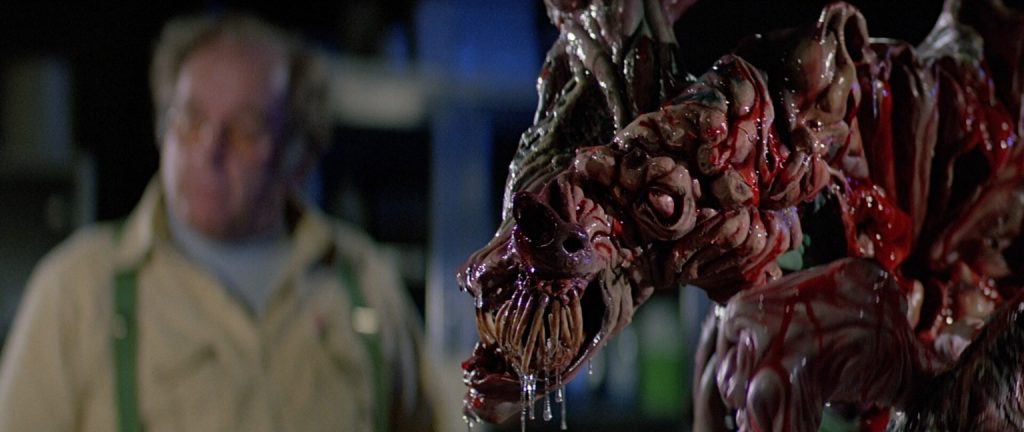
It’s apparent that either Rob Bottin, Carpenter or both drew inspiration from the nightmarish, tentacled creations of H.P. Lovecraft. Carpenter has given himself the modern day moniker of The Horror Master (follow him on Twitter and you’ll see) and it’s an apt title as he fully understands how to invoke shock and terror in both his characters on screen as they stand in near-breathless disbelief and disgust at what are some of the most visceral images seen in a horror film. Through our protagonist’s slack-jawed reactions, our own shock is reinforced. It’s hard not to circle back to the work of Bottin and Co. as their creations give so much to a film that is already far more than the sum of its on-screen horrors.
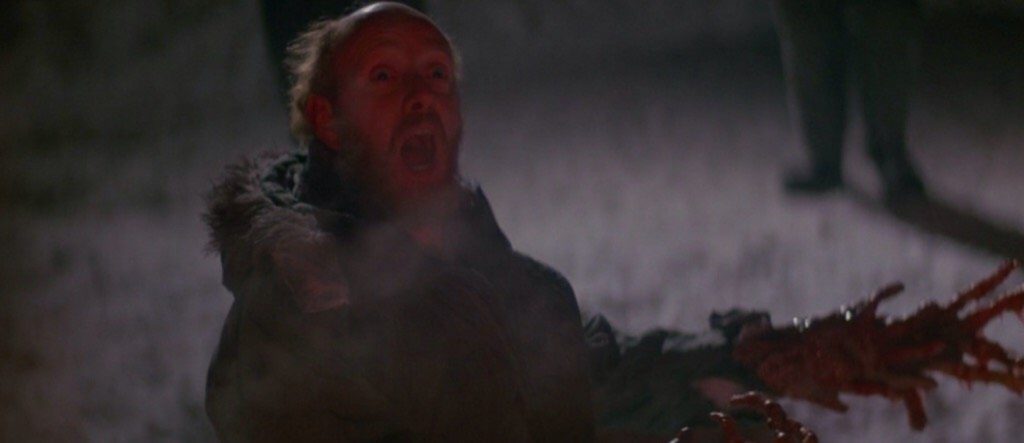
Shot by acclaimed cinematographer Dean Cundey, who worked on Carpenter’s previous films, Halloween, The Fog and Escape From New York, The Thing is a uniformly gorgeous looking film made all the more so by the painstaking 4K restoration the film has recently received courtesy of Arrow Video. Cundey makes the contrasting darkness and both natural and artificial light sources blend to beautiful effect. Take for example the scenes where flares are used where the screen is awash with purples, oranges and pinks. Cundey, like every other artist working on the film, is a true master of his trade and his careful use of lighting also helps compliment Bottin’s brilliant effects work.
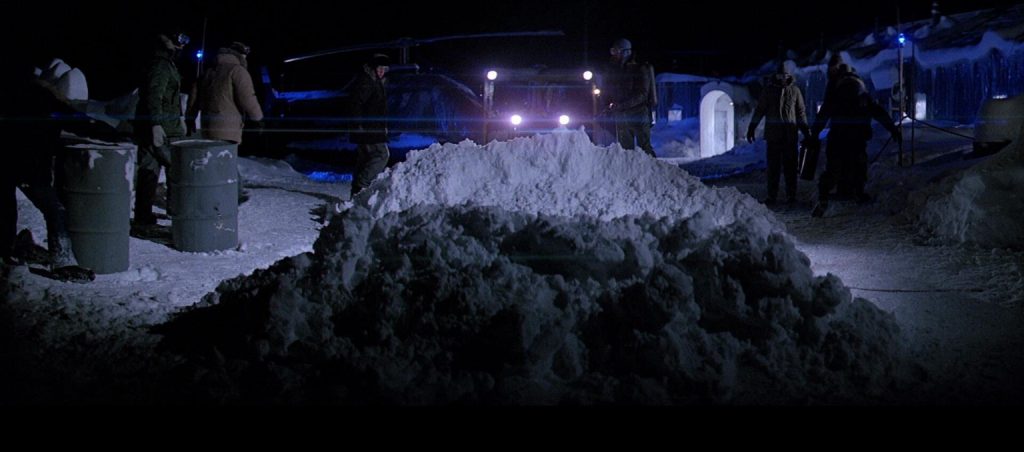
Ennio Morricone’s score is equally effective and imbues the film with the same deliberate pace that Todd Ramsay’s editing also achieves. The music has an underlying thrum, a pulse if you will, that feels otherworldly yet harkens back to Carpenter’s own synthesised scores. The music compliments the film as both an entity unto itself but is also a respectful nod to the trademark style of its director. The production design fully convinces that this is a remote outpost, thrown together with little regard for creature comforts. The film’s interiors were shot on the Universal backlot in stifling heat. For the exteriors, the crew moved to British Columbia where they built the outpost in the summer and returned six months later to find it covered in snow and ready for them to shoot. Even Drew Struzan’s iconic one-sheet theatrical poster is perfect in conveying something unsettling without giving anything away about the true appearance of the Thing. The way these technical and artistic aspects work together in such harmony make Carpenter’s film so immersive, darkly beautiful, yet potently unsettling.
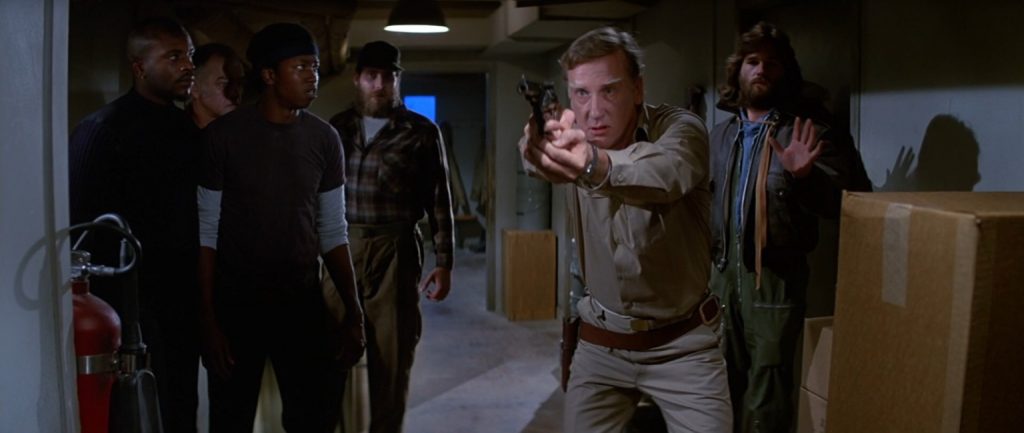
Bill Lancaster’s screenplay makes the already naturally diverse cast all the more memorable. It’s rumoured that Lancaster wrote significant layers of backstory for each of the characters which explained why such a group of seemingly disparate individuals found themselves in such a remote location. That this group of isolated men in their varied positions of responsibility and contrasting personalities find themselves in a position of looping and mounting distrust caused by this alien creature is part of the tragedy. We learn little about them as individuals but during the time we spend with them, we see that they are fully rounded characters and decent men with depth of character and we are totally sold and immersed in them and the terrible plight they face.
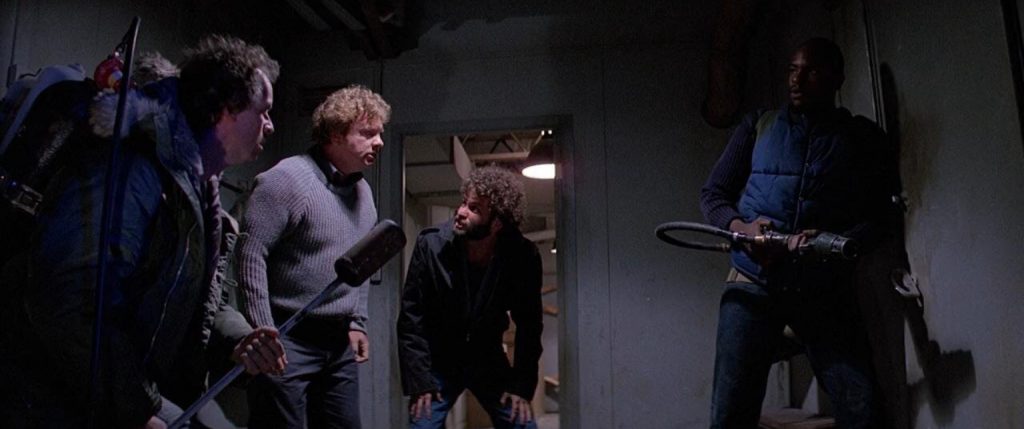
The cast is tremendous, with an almost fiercely workmanlike resolve coming through in their individual portrayals, most of them character actors with the exception of Russell who gives arguably a career best performance as the reluctant emerging leader of the group. They work, quip, snap at and just about tolerate each other in a shared isolation. The situation of grave adversity they find themselves in, instead of making them band together, causes them to turn on each other whilst some also fight for the position of group leader. The script never addresses anything in a manner that’s cliched or clumsily on the nose and it’s neatly tied up with all sorts of underlying allegorical ideas, metaphors and real world social commentary. The Thing came out during a time of panic, uncertainty and fear as news of the AIDS virus was seemingly spreading out of control. It was a disease for which the carrier bore no outward signs, and in subsequent discussion about the film, Carpenter has pointed out that these clear comparisons are there whether or not they were consciously intentional choices on behalf of Carpenter and Lancaster at the time.
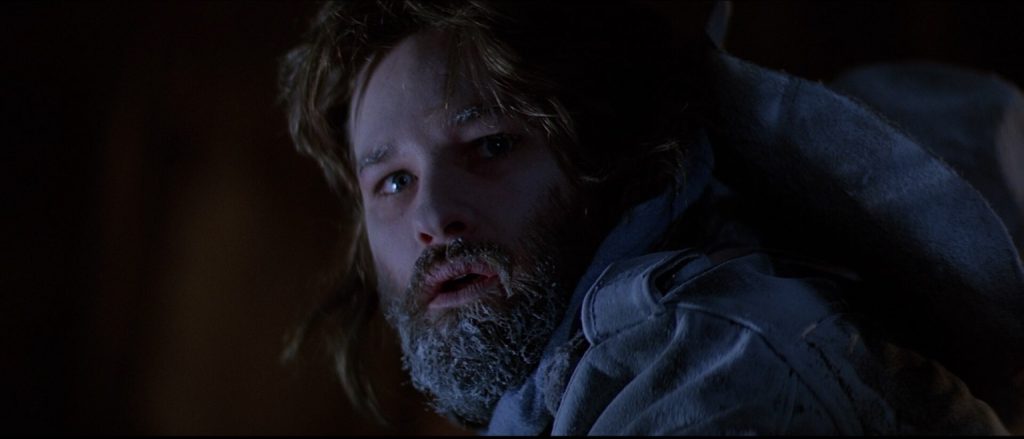
It’s hard to comfortably draw a discussion of The Thing to a close as there are so many standout scenes that warrant a mention. One of the most shocking yet inventive scenes is where Norris (the late Charles Hallahan), succumbs to a heart attack and his friends rush to get the defibrillator on him. Doc Copper, obviously being the most qualified, climbs atop Norris, now lying on a trolley and performs CPR upon his fallen colleague. He quickly moves to the defibrillator and shocks Norris to no avail and then as he attempts a second shock he presses down with the shock pads and – and it really can’t be stressed how insane what follows is – Norris’ chest tears open like a giant mouth with huge, jagged teeth which clamp on Doc’s forearms like a bear trap, ripping them off below the elbow. The use of an actual amputee wearing a prosthetic of Richard Dysart’s face totally sells the brief wide shot.
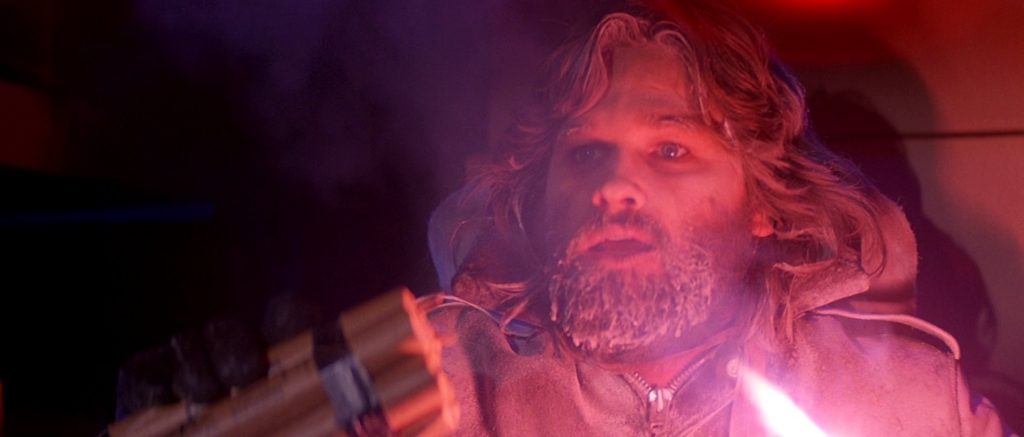
Now before you consider the further insanity of the very much not-human Norris’ head tearing itself away from its now burning body before sprouting spider-like legs, consider this… Prior to Norris’ apparent heart attack he is seen to be suffering from chest pains and shortness of breath. Now this can be taken one of several ways. Either Norris is experiencing internal pain as the organism assimilates him or, having already finished the assimilation process, the now Norris-Thing has so perfectly replicated its host that it’s also copied a heart weakness or defect and playing out the subsequent heart attack is akin to the Thing mimicking any other behavioural quirk of it’s prey. These layers of depth are further evidence, not that it’s required, that The Thing is a true work of filmmaking and storytelling genius. As Palmer (David Clennon) turns to see the Spider-head-Norris-Thing scuttling off he simply says what we are also thinking, “You gotta be fucking kidding!”
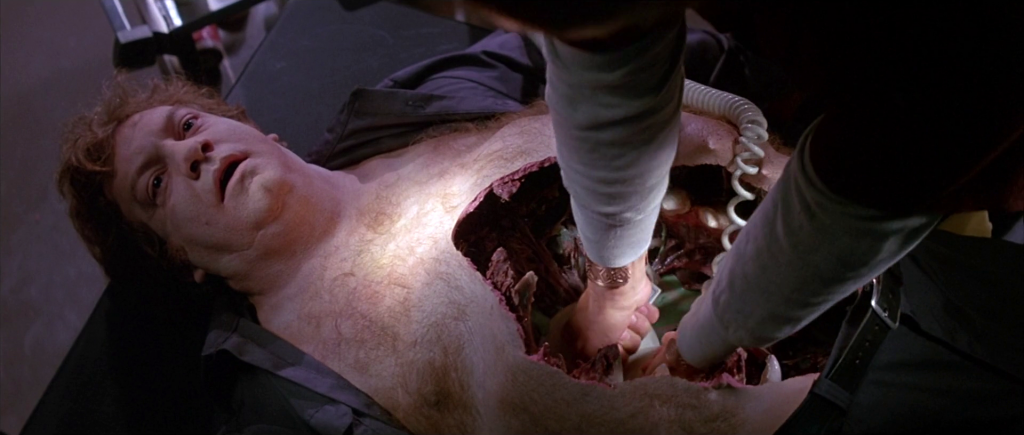
Chief amongst these standout set pieces is the now legendary blood test scene. By this point the level of palpable tension the film has wrought upon us is more than several other horror films combined would be capable of, but it’s with several of the men tied to a couch that we are treated to a masterclass in how to capture an audience’s full, unbridled attention. As we now know all too well, any one of them could be the creature but the way the scene plays out with their thumbs being cut with a scalpel (something that’s as wince-inducing as anything else in the film) and their blood being put into a Petrie dish and then poked with a hot wire, is true edge of your seat stuff, and if the eventual jump-scare moment isn’t enough, Palmer’s subsequent transformation and attack upon Windows (Thomas Waites) is as jaw dropping as the innumerable scenes of gore-fuelled carnage that precede it.
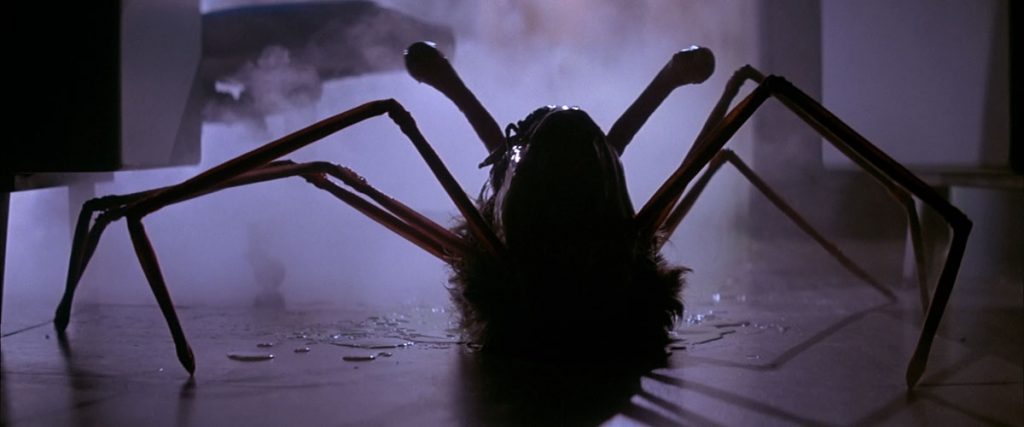
No discussion of The Thing would be complete without mentioning the ending. With the base ablaze, the surviving MacReady is joined by Childs whose explanation as to where he’d been isn’t wholly convincing. Yet they sit together calmly, both men exhausted and in no shape to physically assail the other should he be anything other than human. Knowing that the temperature will soon drop fatally low, MacReady’s suggestion that they, “just wait here for a little while… see what happens”, is an ending that has been and will be debated for years to come. Are one, both or neither men infected? Resigning themselves to death only applies if they’re human. The creature survived for a hundred thousand years in the ice and could easily survive a few more days, weeks, months or years. Any rescue team would ensure that the creature reaches population after which humanity is doomed. Carpenter gives us little clue as to the truth, if there is one. The inherent ambiguity of The Thing’s ending is the cherry on top of an exquisitely crafted cake. The answer is whatever you want it to be. Personally, and taking into account things learned from the 2011 prequel, I like to believe that by way of his actions, that MacReady is human and that the brief glimpse of Childs’ earring shows that he too isn’t a facsimile. Both men will likely perish but humanity will prevail but that’s my take, and it’s no more or less valid than any of the other interpretations I’ve read or heard.
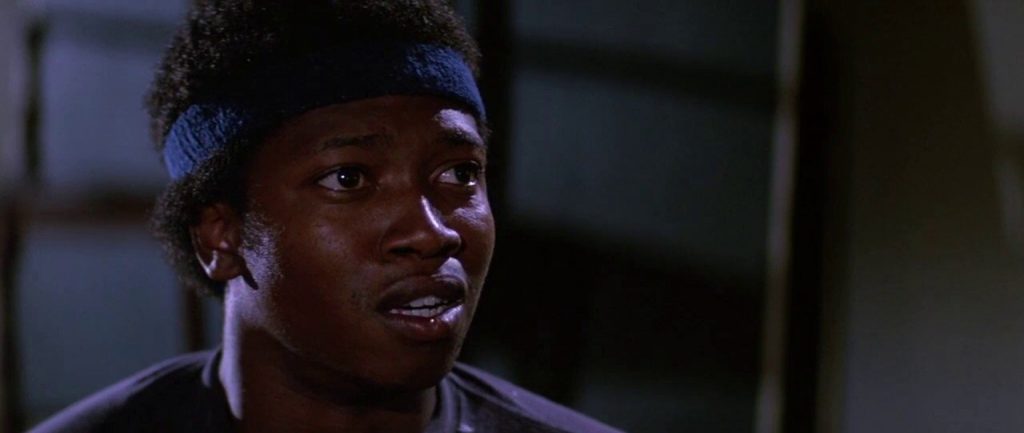
Speaking of the 2011 version of The Thing, there are many who believe that it isn’t worthy of discussion in the same breath as the 1982 film, but I’m not one of those people. Whilst it in many ways plays out as a retread of the events of the earlier film, and shares the same title, it is very much a direct prequel to Carpenter’s film, portraying the events of the Norwegian outpost. And whilst it falls foul to some unfortunate genre tropes and was hamstrung by some quite ridiculous studio interference (the original practical effects the 2011 film employed were redone as mostly CG effects at the behest of the studio), it remains faithful to the strict continuity of the 1982 film, a continuity it tries to adhere to with an almost surgical precision. Look out for the scene where an axe is left in a door, the very same axe MacReady and Doc see when they visit the Norwegian base. Instead of the blood test it posits that the organism can only replicate organic matter, not metal, so dental fillings and piercings are a sign that someone is human and not a copy. It also mimics the feel of Carpenter’s film to some degree and must be credited for at least being deeply respectful of and not harming the legacy of it’s predecessor.
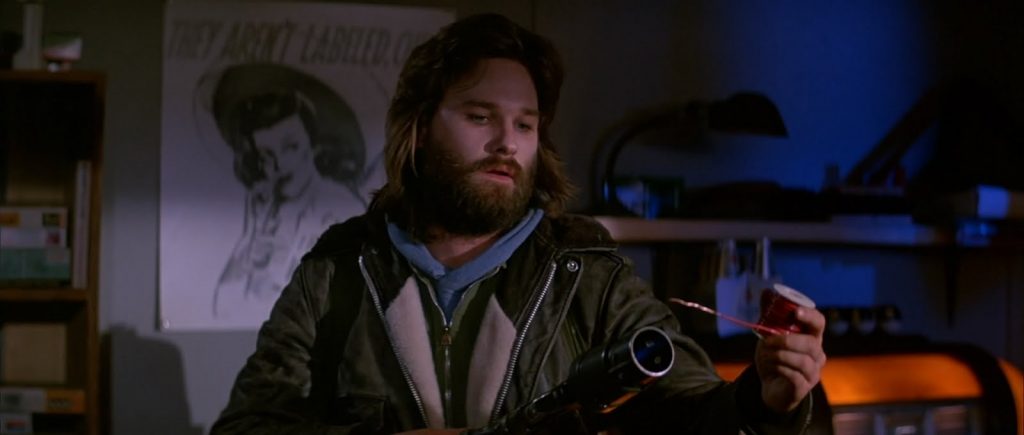
Carpenter’s film however, remains the definitive version of Campbell’s original idea. What makes the story of Carpenter’s iteration so satisfying is that like the creature of the title, it’s a survivor. Released on June 25th 1982, the same day as another seminal science fiction film, Ridley Scott’s Blade Runner, The Thing was met with an inexplicably negative critical response and in turn, only barely recouped its hardly massive $15 million budget, grossing just over $19 million domestically. Unfortunately for Carpenter, his film was going up against a slew of now classic films. The summer of 1982 had arguably the greatest release schedule in modern times and saw several hugely successful films playing around the same time to captive audiences. Chief amongst these was Steven Spielberg’s E.T. The Extra-Terrestrial, a markedly different tale of a lone alien on Earth which opened two weeks before The Thing. With hindsight, the summer probably wasn’t the best time to release a film as bleak as The Thing and commercially it bombed. But much like Blade Runner, which also failed to achieve success upon its theatrical release, adoration for The Thing grew in the intervening years as it gained a following on home video. By the mid to late ‘90s it had a strong following which has since snowballed to the point where it is now, ironically, held in even higher regard than the film that trounced it at the box office. At time of writing, The Thing scores a healthy 8.2/10 on IMDB and sits at No.163 on the same site’s Top 250 films of all time whereas E.T. by comparison, scores 7.9/10.
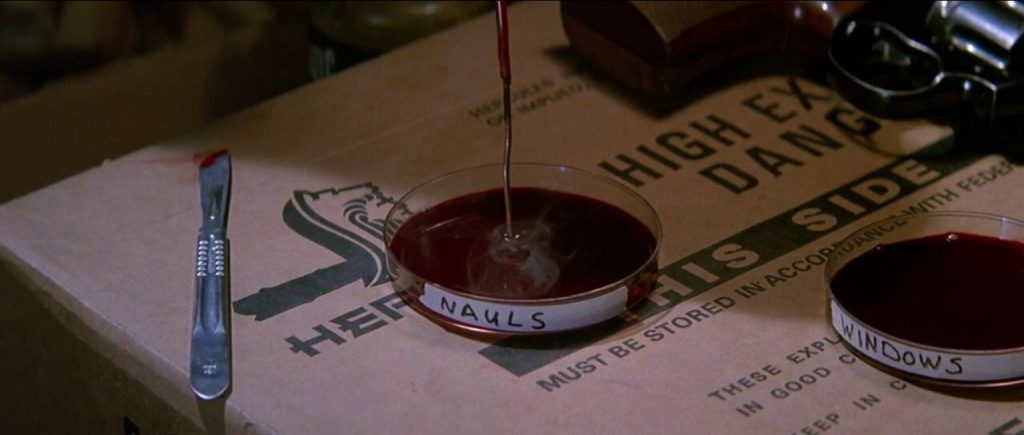
To see love for The Thing grow in the decades since its box office failure and rightfully gain the recognition it so richly deserves is indeed comforting for this particular fan. Quentin Tarantino is a huge fan of Carpenter’s film and has said that The Thing was a big influence on his debut film Reservoir Dogs and he even made a sort of western remake of the film in the form of The Hateful Eight which even goes as far as to use, to great effect, Ennio Morricone’s unused cues from his score for The Thing.
Whilst John Carpenter failed to maintain the same level of success in the ‘90s that he’d had in the two previous decades, he still has to his name a superb body of work, and many of his films have achieved truly classic status. With Halloween he virtually created the slasher sub-genre, with Escape From New York he created one of the best cult-classic, action/science-fiction films of the ‘80s and one of its most iconic characters in Snake Plisskin.
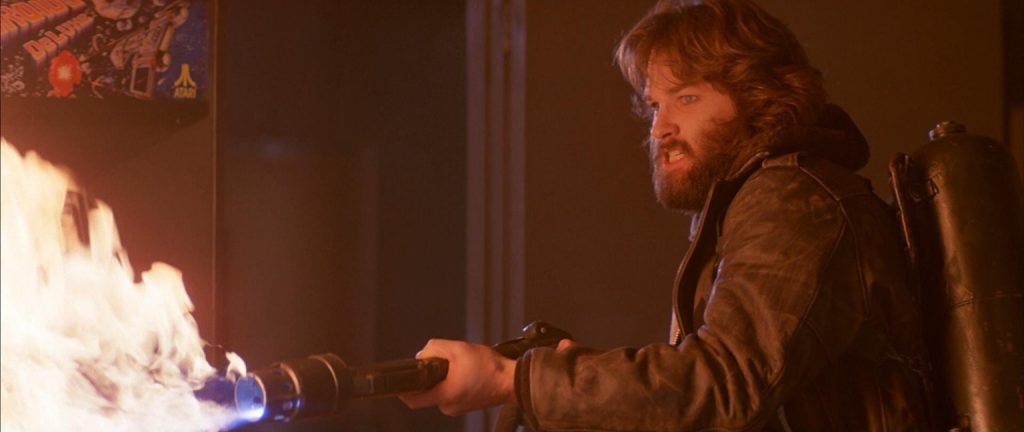
There are many more films in Carpenter’s filmography which are beloved classics or cult classics, such as Assault On Precinct 13, The Fog, Christine, Starman, Big Trouble In Little China, Prince of Darkness, They Live and In The Mouth of Madness, but Carpenter’s career peaked with a film that, for a time, was his biggest failure. For The Thing, in spite of its poor performance back in that amazing summer of 1982, is without doubt not only Carpenter’s best film and not only one of the greatest films of the 1980s but a film that just never diminishes. And to create a film so unrelentingly bleak yet so rewatchable, is a remarkable feat for any director to achieve.
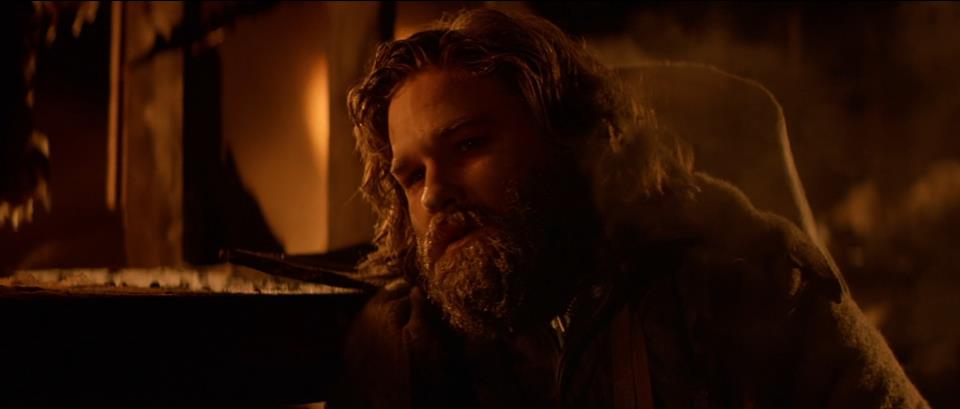
With each passing year The Thing grows in status, the recent 4K restoration has preserved it further for future generations to discover and be wowed by. I don’t use such gushing praise lightly but there are a handful of films that are just perfect, that accomplish what they set out to achieve with aplomb and The Thing is just such a film. It perfectly straddles the horror and science fiction genres and is as good a representation of either that you’ll find whilst avoiding some of both genres’ more predictable tropes. It’s shocking imagery both repulses and wows with the incredible degree of ingenuity on display. It looks gorgeous and the score is remarkable. The cast are all spot on and there isn’t a flat beat throughout. Bringing all these things together is John Carpenter and amongst his damn fine filmography, this is the one ‘Thing’ that represents a filmmaker truly at the top of his game and is for me certainly, one the greatest movies ever made.
Film ‘89 Verdict – 10/10
John Carpenter’s The Thing is available on Blu Ray in the US courtesy of Scream Factory and in the UK courtesy of Arrow Video.
